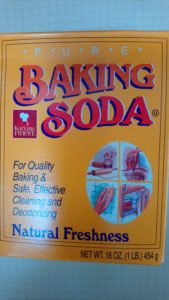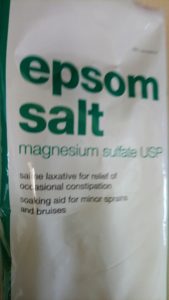Step Seven Class Notes
Warning:
Some of you are not going to like hearing about Step Seven. I have only one question for you to meditate on:
How serious are you about reversing whatever symptoms you may currently be experiencing?
If on a scale of 10 (where 1 is not really serious and 10 is profoundly serious) you score yourself a 10 – I urge you to take the Step 7 seriously.
What does it take to make Step 7 happen?
Do I have to purchase anything?
Heavens no!
None of the Giant Leap for Recovery steps involves buying any products or doing any expensive therapies.
Some people suspect that the underlying motivation to offer my Giant Leap course at such a small tuition is to sell your something.
That is not what this course is about. It is all about helping you heal. Healing from the inside out entails taking full charge of your recovery program.
Step Seven involves NOT DOING something you may have been doing your entire life.
Stop Eating All Dairy Products
I know some of you are probably thinking – this is stupid. These steps are stupid.
I love eating dairy.
Hey. So do I!
Why do I ask you to take this step seriously?
The research on what predicts Parkinson’s symptoms is unequivocal. Abstracts of recent studies are included at the bottom of this class handout.
Research shows people who eat dairy products are significantly more like to experience symptoms of Parkinson’s disease. The studies use huge samples and are all well designed.
Are you serious about healing?
Take this step seriously.
My personal experience with dairy
- At a young age
Serious ear aches due to allergic reaction to dairy.
- And now.
Muscle testing recently reveals I should stop eating all cheese. Duh. I knew this but was in denial.
- I have interviewed a number of people who stopped eating dairy and experienced a welcome relief of symptoms.
- It usually takes time to experience results.
Abstracts of recent studies are included in the class notes which you will receive as an attachment to the next email from me. This will give you confirmation that my suggestion has merit.
What about butter?
Why not muscle test this one?
You may be thinking …
I have tried to stop eating dairy. I feel so empty and unsatisfied.
Yes – this is precisely the feeling you will have …
For 4-6 weeks. Why does it lift?
Listen to my interview with
Warren Kramer:
http://www.blogtalkradio.com/parkinsons-recovery/2017/10/25/the-macrobiotic-approach-to-health-and-wellness
Our body craves (and becomes “addicted”) to the food we eat. When we start eating fresh, live food – we will no longer crave dairy products.
Go cold turkey on eating dairy for 2 weeks. Then – pleasure yourself with gulping down the dairy products you have always loved to eat:
And see if you feel worse. That should be an additional motivation to get serious about Step 7.
Abstracts of Two Recent Studies
Eur J Epidemiol. 2014 Sep;29(9):613-9. doi: 10.1007/s10654-014-9921-4. Epub 2014 Jun 4.
Dairy foods intake and risk of Parkinson’s disease: a dose-response meta-analysis of prospective cohort studies.
Jiang W1, Ju C, Jiang H, Zhang D.
Dairy foods have been linked to Parkinson’s disease (PD), and a meta-analysis of prospective cohort studies on dairy foods intake and PD risk was conducted. Eligible studies were identified in a literature search of EMBASE and PubMed up to April 2014. Seven results from prospective studies were included, including 1,083 PD cases among 304,193 subjects. The combined risk of PD for highest vs. lowest level of dairy foods intake was 1.40 (1.20-1.63) overall, 1.66 (1.29-2.14) for men and 1.15 (0.85-1.56) for women. For highest vs. lowest level, the PD risk was 1.45 (1.23-1.73) for milk, 1.26 (0.99-1.60) for cheese, 0.95 (0.76-1.20) for yogurt and 0.76 (0.51-1.13) for butter. The linear dose-response relationship showed that PD risk increased by 17% [1.17 (1.06-1.30)] for every 200 g/day increment in milk intake (Pfor non-linearity = 0.22), and 13% [1.13 (0.91-1.40)] for every 10 g/day increment in cheese intake (Pfor non-linearity = 0.39). The absolute risk differences were estimated to be 2-4 PD cases per 100,000 person-years for every 200 g/day increment in milk intake, and 1-3 PD cases per 100,000 person-years for every 10 g/day increment in cheese intake. Dairy foods (milk, cheese) might be positively associated with increased risk of PD, especially for men.
Neurology. 2017 Jul 4;89(1):46-52. doi: 10.1212/WNL.0000000000004057. Epub 2017 Jun 8.
Intake of dairy foods and risk of Parkinson disease.
Hughes KC1, Gao X2, Kim IY2, Wang M2, Weisskopf MG2, Schwarzschild MA2, Ascherio A2.
Abstract
OBJECTIVE:
To prospectively examine the association between commonly consumed dairy products and the risk of Parkinson disease (PD) in women and men.
METHODS:
Analyses were based on data from 2 large prospective cohort studies, the Nurses’ Health Study (n = 80,736) and the Health Professionals Follow-up Study (n = 48,610), with a total of 26 and 24 years of follow-up, respectively. Both US-based studies were conducted via mailed biennial questionnaires. Dietary intake was assessed with food frequency questionnaires administered repeatedly over the follow-up period. Incident cases of PD (n = 1,036) were identified via questionnaires and subsequently confirmed by reviewing medical records. We also conducted a meta-analysis to combine our study with 3 previously published prospective studies on total milk intake and PD risk and 1 study on total dairy intake and PD risk.
RESULTS:
While total dairy intake was not significantly associated with PD risk in our cohorts, intake of low-fat dairy foods was associated with PD risk. The pooled, multivariable-adjusted hazard ratio (HR) comparing people who consumed at least 3 servings of low-fat dairy per day to those who consumed none was 1.34 (95% confidence interval [CI] 1.01-1.79, p trend = 0.04). This association appeared to be driven by an increased risk of PD associated with skim and low-fat milk (HR 1.39, 95% CI 1.12-1.73, p trend <0.01). Results were similar in women and men (p for heterogeneity >0.05). In the meta-analysis, the pooled relative risk comparing extreme categories of total milk intake was 1.56 (95% CI 1.30-1.88), and the association between total dairy and PD became significant (HR 1.27, 95% CI 1.04-1.55).
CONCLUSIONS:
Frequent consumption of dairy products appears to be associated with a modest increased risk of PD in women and men.



